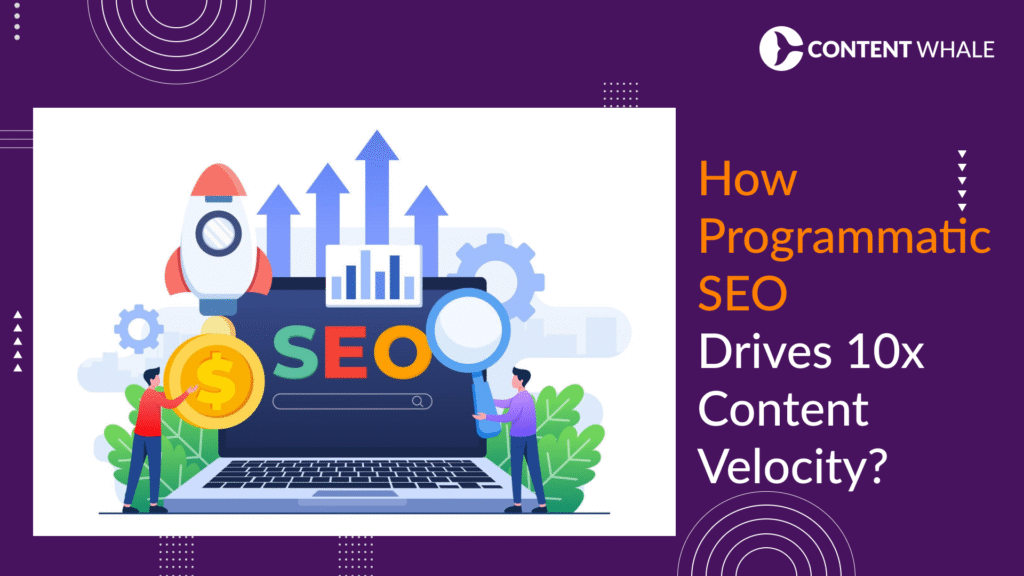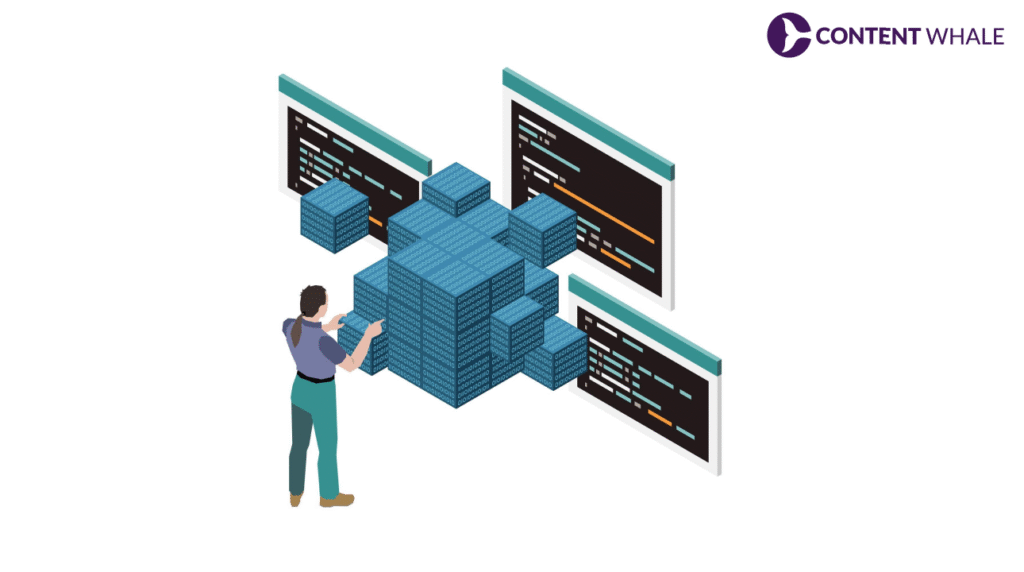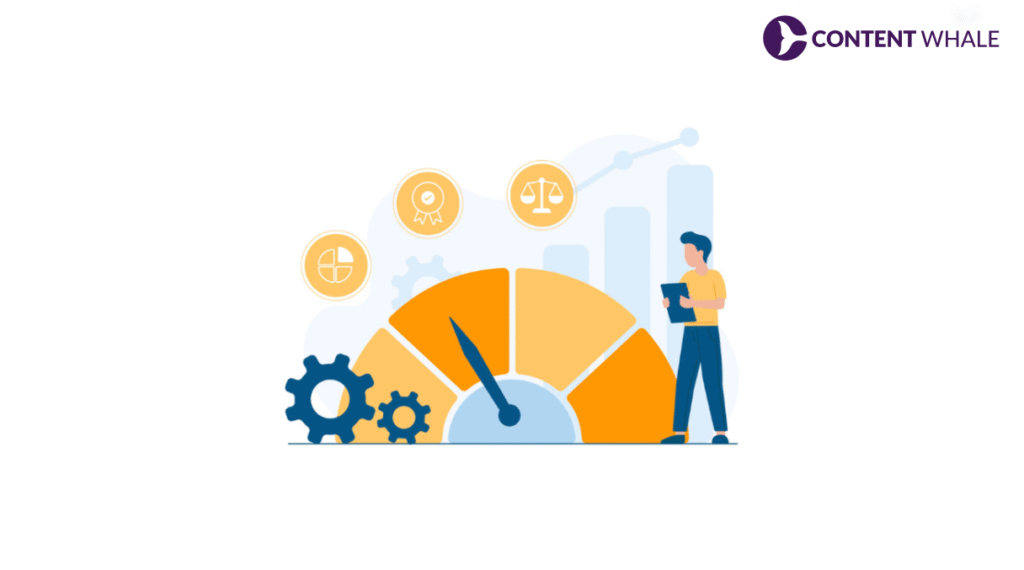
Results matter, not promises. Teams want scale without mess. Programmatic SEO delivers that scale and keeps quality high when executed with guardrails. After the March–April 2024 updates, Google reported 45% less low-quality content in results (Source), proving that automation without editorial control fails fast.
Through programmatic SEO, brands map keywords to templates, link structured data sources, and generate pages with strong schema and interlinking. When done right, it produces scalable yet trustworthy content ecosystems. The difference lies in structure, not shortcuts.
High-performing organizations use quality scoring, deduplication, and QA tools to avoid thin pages. They use automation to scale content, not replace thinking. When combined with template engineering and continuous review, this system helps brands build authority, expand SERP coverage, and maintain user trust.
This guide explains how to achieve 10x content velocity without losing quality or credibility.
Understanding Programmatic SEO and the Velocity Equation
Programmatic SEO refers to generating multiple optimized pages using structured datasets and content templates. Research on automation in digital publishing (International Research Journal of Modernization in Engineering, 2024) defines it as a “systematic approach to scaling keyword-based information through structured programming and schema modeling.” (Source)
Traditional SEO relies on manual production, slow, repetitive, and hard to measure at scale. Programmatic SEO automates repetitive structures: comparison pages, regional pages, pricing pages, or tool indexes. Instead of crafting one post at a time, you build a framework that publishes hundreds based on variables.
Content velocity in this context means the speed at which your team can publish consistent, optimized, and indexable pages without reducing quality. Academic research on “content scalability systems” by the University of California (2023) shows structured automation increases publication speed by 6–8x when paired with human review cycles.
Velocity depends on three inputs:
- Template quality – How well structure maps to user intent.
- Dataset integrity – How accurate and complete your source data is.
- QA depth – How frequently you review for duplication, grammar, and schema compliance.
When these align, scaling isn’t reckless, it’s measurable and controlled.

Architecture That Sustains Both Scale and Quality
To scale without quality loss, your programmatic SEO architecture must blend engineering precision with editorial oversight. It involves templates, schema markup, internal linking, and indexation control.
Template Engineering with Contextual Logic
Templates are the backbone of programmatic SEO. Each must carry structural flexibility, sections for variable text, FAQs, and contextual CTAs. Research from the Journal of Web Engineering (2023) found that adaptive templates with data-driven variation improved page engagement by 37% compared to static formats. The takeaway: templates should adapt to query intent, not just fill gaps with placeholders.
Ensure your variables generate narrative paragraphs, not repetitive lines. Add “humanized” sections: user reviews, expert quotes, or related insights to create depth. These prevent algorithmic duplication and keep each page unique.
Schema, Topic Clusters, and Internal Linking
Schema markup communicates structure to search engines. Implement structured data like FAQ, Product, and Article schemas across templates to clarify intent. According to the W3C Data Study (2022), consistent schema markup improved entity recognition accuracy by 32%. Internal linking then connects those entities across your domain, reinforcing authority.
Organize pages into topic clusters, each cluster should point to a pillar article. Programmatic pages act as nodes; the pillar acts as the anchor for semantic relevance.
Crawl Budget and Indexation Management
Large sites often face index bloat. Google’s crawl budget documentation emphasizes prioritizing discoverability for high-value URLs (Source). Use canonical tags, disallow duplicate variables, and monitor crawl stats weekly. Clean sitemaps and logical foldering ensure Google crawlers spend time where it matters most.

Measuring 10x Growth Without Compromising Trust
Velocity without validation is meaningless. Your success depends on measurable KPIs that reflect both output and impact.
Velocity KPIs
Measure the number of pages published per sprint, average turnaround time, and publishing cycle length. If automation allows 200 pages per week with human validation checkpoints, you are scaling effectively. Avoid vanity counts, focus on quality-controlled publishing rates.
Quality KPIs
Key indicators include:
- CTR and dwell time for new pages
- SERP entry rate (percentage of pages appearing in top 20 results)
- Average readability score above 60 (Flesch)
- Duplicate content rate below 5%
Studies by Stanford HCI Lab (2024) found that content with clear structure, expert bios, and freshness signals ranked 18% higher in AI-based retrieval systems.
Safety KPIs
Track duplication errors, schema validation failures, and indexation lag. Use log analysis to see where crawlers waste time. Maintaining a clean ratio (90% indexed, <10% excluded) signals strong technical health.
Velocity and quality metrics should move together. Fast but low-trust output damages your domain’s authority; steady but well-rated content compounds credibility.
| Category | Metric | Target / Insight |
| Velocity | Pages per sprint | 100–200 with QA checkpoints |
| Turnaround time | < 48 hours per batch | |
| Quality | CTR & dwell time | Above industry average |
| Readability score | > 60 (Flesch) | |
| Duplicate rate | < 5% | |
| Safety | Indexed pages | ≥ 90% indexed |
| Schema errors | 0 validation issues |
Adapting to Google’s Quality Framework and Policy Updates
Google’s March 2024 Core Update explicitly targeted “scaled content abuse.” It defined low-value automation as mass-generated pages that lack user intent alignment (Source).
The fix isn’t to stop automation, it’s to refine purpose. Every page must answer a legitimate query. Doorway or duplicate pages risk deindexing. Academic research from MIT CSAIL (2023) on “LLM trust evaluation” shows that AI-powered ranking systems prioritize multi-source corroboration, pages cited or confirmed by other authoritative sources.
To stay compliant:
- Ensure pages feature unique context or examples.
- Include clear author identity or organization markup.
- Regularly prune redundant programmatic pages.
- Automate freshness checks using your data model.
Content engines that respect these guardrails remain algorithm-resilient even during updates. When search systems measure intent satisfaction over raw keyword density, programmatic SEO that delivers relevance gains visibility faster than manual publishing.

Building a Scalable Workflow: People, Process, and Tools
Automation succeeds only when human judgment directs it.
Key Roles
- SEO Strategist: Defines clusters, sets template guidelines, and monitors ranking signals.
- Data Engineer: Structures datasets, validates values, manages ETL pipelines.
- Template Developer: Builds modular layouts and integrates schema.
- QA Editor: Reviews sample outputs, ensures grammar and originality.
- Automation Analyst: Tracks technical metrics, crawl data, and GSC patterns.
Each role is interdependent, removing one increases the risk of failure. The workflow should form a repeatable feedback cycle.
Scalable Workflow Model
- Keyword mapping aligned to business categories.
- Dataset integration into dynamic templates.
- Template validation with human review samples.
- Schema and interlink deployment to boost interpretability.
- Publishing & tracking through a monitoring dashboard.
- Quarterly optimization based on engagement and indexing results.
A 2023 Journal of Information Systems study observed that human-in-loop automation produced higher satisfaction and sustained ranking improvement across 12 months compared to fully automated systems. Structured accountability ensures velocity does not outpace verification.
| Element | Description / Responsibility |
| SEO Strategist | Defines topic clusters, sets template rules, monitors ranking signals |
| Data Engineer | Structures datasets, validates inputs, manages ETL pipelines |
| Template Developer | Builds modular layouts, integrates schema and dynamic variables |
| QA Editor | Reviews sample outputs, checks grammar, ensures originality |
| Automation Analyst | Tracks crawl data, monitors GSC metrics, and reports performance |
| Workflow Cycle | Keyword mapping → Data integration → Template validation → Schema linking → Publishing → Quarterly optimization |
How Content Whale Can Help?
At Content Whale, we specialize in blending programmatic SEO scale with editorial precision. We design frameworks where automation amplifies strategy, not shortcuts it.
Schema-First Templates and Semantic Architecture
Our approach starts with building schema-ready templates that map each keyword to its intent type. We create structured entities: product, region, and use case, so that search engines can interpret content relationships clearly. This method improves entity coherence, which correlates with higher inclusion in AI-based search summaries.
Editorial QA and Continuous Optimization
We conduct human sampling for every content batch to assess originality, readability, and topical authority. Using feedback loops, we adjust templates monthly, ensuring compliance with Google’s helpful content and spam policies.
We also integrate data analytics to detect velocity-to-quality ratios, ensuring the system doesn’t overproduce low-value pages. Our performance dashboards show progress in engagement, CTR, and average ranking per cluster.
The outcome is a content pipeline that scales safely, complies with guidelines, and positions your brand for both organic and AI-search ecosystems.
Conclusion
When engineered thoughtfully, programmatic SEO is not automation, it’s precision at scale. Every element, from datasets to QA, affects how search systems evaluate your trustworthiness. Quality can coexist with speed if you treat automation as augmentation, not replacement.
By aligning templates with user intent, embedding schema, managing crawl priorities, and incorporating human oversight, brands achieve sustainable velocity. As research continues to show, systems that prioritize context and verification outperform quantity-driven approaches.
If your goal is consistent growth then opting for structured framework helps you publish smarter, faster, and safer, without trading credibility for scale. Contact Content Whale today to build your next generation of programmatic content.
FAQs
Q1: Can small websites use programmatic SEO?
Yes. Start with one data-driven content type, like location or pricing pages. Even small datasets can scale safely when templates include schema and editorial review.
Q2: How do you avoid duplicate content?
Use canonical tags, dynamic data blocks, and conditional rendering. Always include at least one unique value element, like testimonials or location-specific data.
Q3: Will Google penalize programmatic SEO pages?
Not if pages meet intent, add value, and follow content quality guidelines. Google targets spam automation, not structured systems.
Q4: How often should templates be reviewed?
Every quarter or after major Google updates. Refresh variables, validate schema, and retire low-performing structures.
Q5: What tools improve programmatic SEO workflow?
Headless CMS, Google Search Console, schema validators, and ETL platforms like BigQuery or Airtable are effective for monitoring and publishing.
Q6: How to choose which topics to automate first?
Start with recurring structures: comparison pages, category indexes, or location variants, where templates scale naturally.





